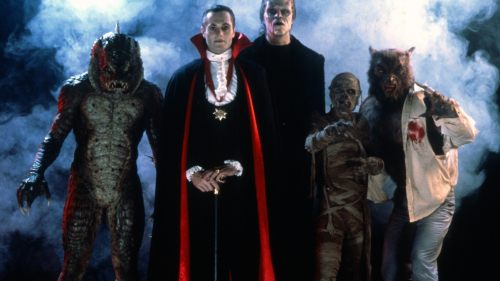Sunday Reads: Rewriting The Manic Pixie Dream Girl In A SIMPLE FAVOR
A Simple Favor is out now. Get your tickets here!
[NOTE: Slight spoilers for A Simple Favor found within.]
Director Paul Feig has upended his fair share of troped lobbed at women, but with the help of screenwriter Jessica Sharzer he appears to come for the manic pixie dream girl in his latest feature, A Simple Favor. Author Nathan Rabin coined the term “manic pixie dream girl” in 2005, referring to actress Kirsten Dunst in the Cameron Crowe drama, Elizabethtown. The MPDG is described as one who “exists solely in the fevered imaginations of sensitive writer-directors to teach broodingly soulful young men to embrace life and its infinite mysteries and adventures.” The woman who possesses these “manic pixie” tendencies is usually overly positive and exists purely to tell the male protagonist how awesome he is (even when the audience knows he isn’t).
The story of a mommy vlogger (played by Anna Kendrick) on the hunt for her missing best friend (played by Blake Lively) could easily focus on the MPDG as Rabin lays it out. Kendrick’s Stephanie envies the life created by Emily (Lively) and once she goes missing Stephanie falls into a hasty affair with Emily’s husband, Sean (Henry Golding). Sean is a once-successful writer who hasn’t written a word in a decade, content to teach. Emily isn’t shy about mentioning Sean’s writer’s block, mocking him chronically for his inability to write something of substance but keep them floundering in debt.
For Sean, it is Stephanie who is his manic pixie dream girl. Unlike his wife, focused on her own autonomy within her role as a wife and mother, Stephanie has found a way to merge the two. Sean is drawn to Stephanie’s love of domesticity, content to have dinner on the table for him. It is Stephanie’s devotion to home and hearth, and her overall cheerfulness, that allows Sean to focus on himself. He tells her he’s taken up writing and is able to “embrace” life because Stephanie is taking care of everything at home. Sean is able to be selfish, yet gives nothing to Stephanie in return. When Emily comes back, decked out like a ‘50s-era housewife, it is a mocking representation of what he appreciates about Stephanie, that she is the dream girl who worships at his feet and his wife doesn’t indulge him in his domestic fantasies.
But where Feig and Sharzer do the most pointed critique against the Manic Pixie Dream Girl is in the relationship between Emily and Stephanie. So far the MPDG has only been representative of heterosexual relationships, with the man firmly in power and using the woman’s purity and effervescence as a tonic to cure their own masculine ills. Here, the roles are subverted. Stephanie has no social life, riddled with guilt about sins from her past and finding herself 110% devoted to her young son. Like the male in a MPDG film, she is searching for a goal outside the bubble she’s created for herself, a sense of autonomy she doesn’t know she’s been missing.
Unlike a typical MPDG heterosexual relationship, wherein the woman causes the man to open up his emotions by sharing pieces of herself, the relationship between Emily and Stephanie is more chaotic. Emily does compel Stephanie to open about her emotions; Stephanie reveals a one-time encounter with her half-brother that, later, was a factor in his demise alongside that of her husband. More importantly, Emily fuels Stephanie’s confidence within herself. Once Emily disappears, Stephanie, through her love and friendship for Emily, begins an investigation. By embracing the “infinite mysteries and adventures” associated with Emily’s life, Stephanie creates her own awakening. Her investigation requires her to employ the tactics Emily herself told her to utilize: stop apologizing, be forceful, own your confidence. This also leads to an uptick in followers to Stephanie’s mommy vlog with Stephanie embracing Emily’s cynicism so much that she records an attempted murder, causing her site to go viral.
Compared to MPDG’s of the past, Emily isn’t required to give up any part of herself in the process of helping Stephanie succeed. In fact, much of Stephanie’s changes aren’t even perceived by Emily until she believes Stephanie has stumbled upon her true intentions. Emily never shares a happy view of the world, and her past isn’t known until Stephanie dredges it up.
In fact, Emily’s manic pixie dream girl qualities almost come off like a curse. For Sean, she’s a “beautiful ghost” who stymies his writing. Later, when Stephanie meets artist Diana Hyland (Linda Cardellini), it’s revealed Emily was Diana’s “muse” who, after taking all Diana’s money, also robbed the painter of her inspiration; now, all Diana can do is paint pictures of knives. Those who seek to use Emily’s essence and profit off it are denied the ability to create. Like the fount of inspiration she employs, it is given only temporarily. In fact, because Stephanie sees Emily as her friend, asking nothing of her in return, she is able to engage her intellect and solve the mystery. Emily empowers Stephanie who, in turn, uses that empowerment to bring Emily to justice for her crimes.
It is possible to say none of this is intentional on the part of Sharzer and Feig, but for those who have ever rolled their eyes at the use of the MPDG, it’s refreshing to see it employed to new effects in A Simple Favor. Emily is a muse and a fantasy, for both men and women, but she comes with her own series of complications. Furthermore, her dream girl qualities are best given to a friend, who, as a woman herself, takes Emily’s power and uses it to strengthen her own fractured femininity. The manic pixie dream girl lives, but only by living for herself.



